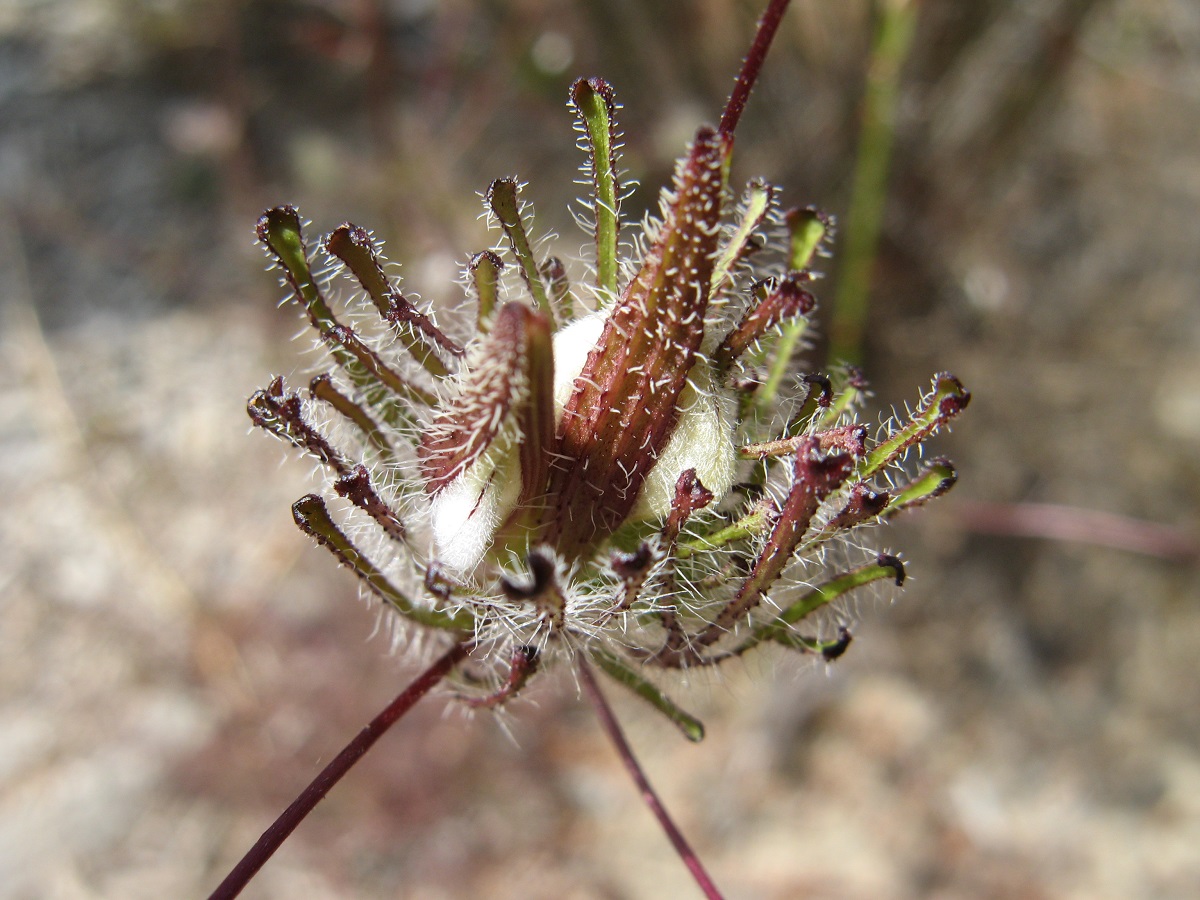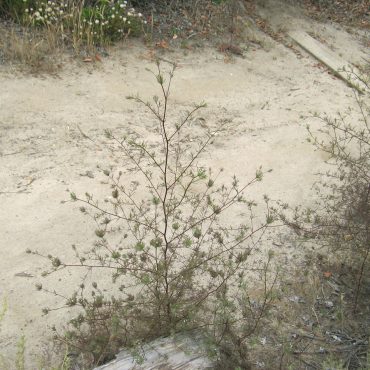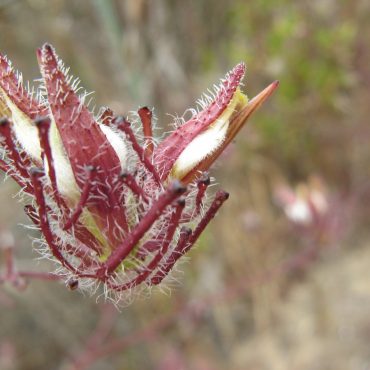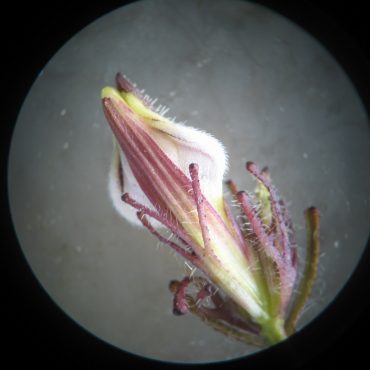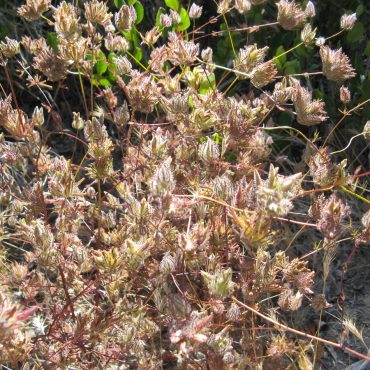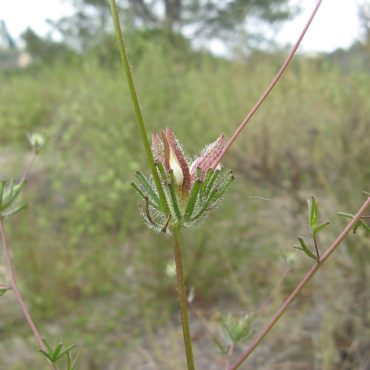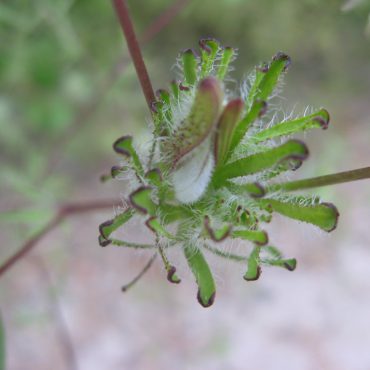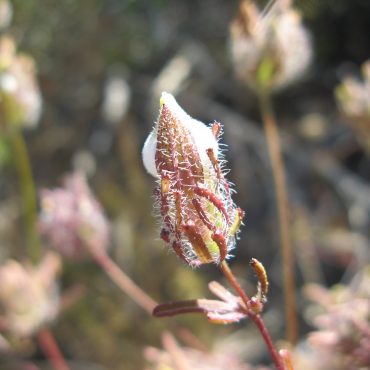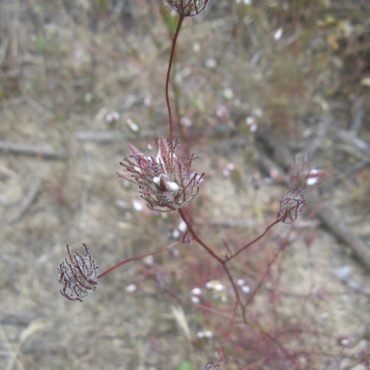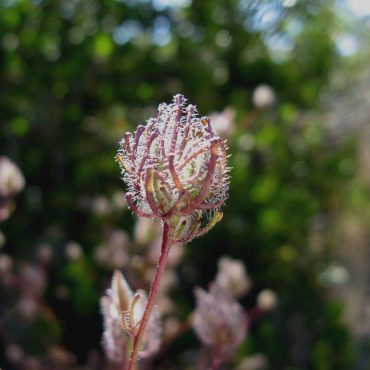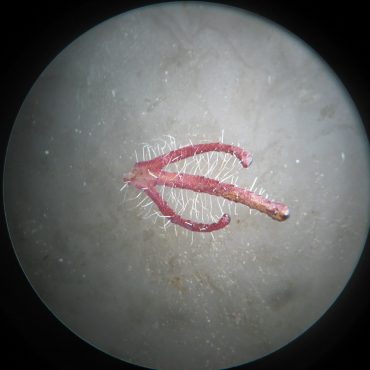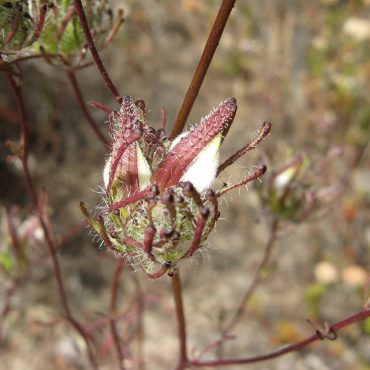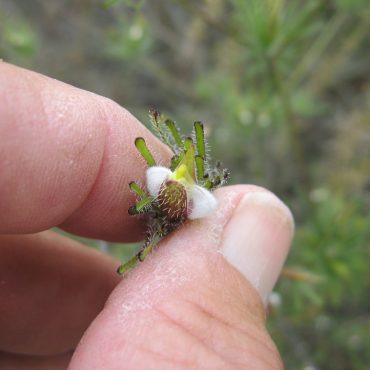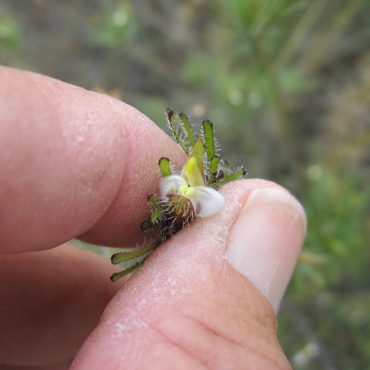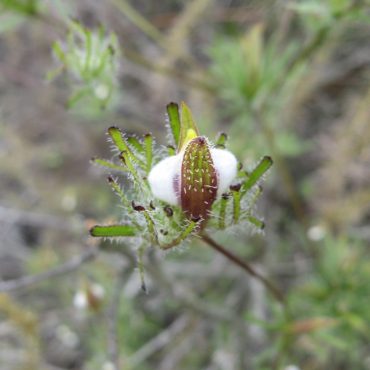Description
4,11,23,59
Dark-tip bird’s beak is a lacy, almost ethereal annual plant, usually less than 3 feet (1 m) in height. Reddish stems are upright and loosely branched. Leaves are usually divided into three thread-like lobes, up to 1 1/2 inches long (4 cm) long. Foliage may be green or burgundy or a combination of the two. Long, stiff bristles cover the leaves and flower bracts; when backlit these shine, giving the plant a halo.
Flowers are born in spherical clusters, up to 1 1/2 inches (4 cm) across. Flowers are white and 1/2 to 3/4 inches long, two-lipped and strongly flattened between two leaf-like straps, one of which is the calyx, the other a specialized floral bract. The upper lip of the flower encloses a pistil and four unequal stamens, each with two anthers. A dark burgundy spot is concealed within the lower lip of the flower. Flower, calyx and floral bract are loosely enclosed within bristly outer bracts, which usually have three linear lobes that may be tipped with burgundy.
The structure of the flower and subtending bracts is complicated, but the inflorescence is unmistakable – a case where a picture is worth a thousand words. A detailed verbal description is given by Prigge and Gibson,4 and individual elements are pictured by Valois.3 To some the flower resembles a bird’s beak. To others, it looks like the egg sac of a spider.100 The blooms occur mainly June to September.1
Twenty to twenty five tiny seeds, develop in a two-chambered capsule, less than 1/2 inch (1.1 cm) long, which splits open longitudinally to release the seeds.

